VoLTE Radio Resource and Quality of Service Class Identifier
Voice over Long Term Evolution, Voice over LTE or with abbreviated version VoLTE. Typically the mobile operators are using CSFallback feature for voice calls in new deployed LTE networks which is cheaper solution than VoLTE. Legacy networks such as UMTS, GSM or CDMA are used for CSFallback, so the UE needs to go back from LTE to one of the mentioned legacy networks then start a voice call. It may cause call setup delay, sometimes blocked calls or other undesired problem.
— VoLTE Overview
— SRVCC
— IMS Overview
— VoLTE Speech Codecs
— Speech States
If an IMS network is deployed with LTE, then no need to use CSFallback (if all UE support VoLTE in the network). It is expensive solution to support voice calls in LTE but better solution.
No setup delay because of CSFallback, no inter-system transition issues because of legacy networks and HD Voice service can be used with EVS codecs (Enhanced Voice Services).
VoLTE is also known as VoIP (Voice over Internet Protocol), but VoIP is not only VoLTE. It includes WhatsApp, Viber, Skype and etc…We should not compare these applications with VoLTE, because VoLTE has large-scale resources.
A question: the user is using VoLTE call in LTE network and came to the LTE network edge, what will happen in this situation? Ok, there are two solutions:
1. The VoLTE call will make handover to CS domain of UTRAN or GERAN if VoIP service is not supported in target networks. This handover type is called SRVCC, with longer name Single Radio Voice Call Continuity.
2. The VoLTE call will make handover to PS domain of UTRAN or GERAN if VoIP service is supported in target networks.
Normally first case is possible.
SRVCC Overview
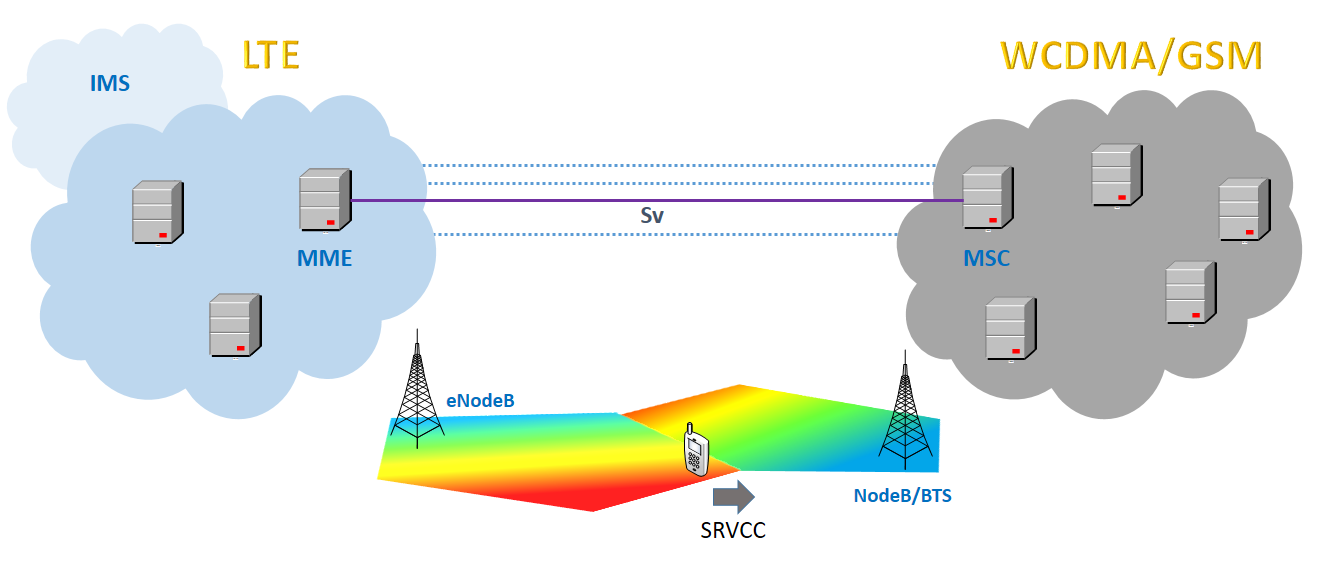
If a mobile operator wants to launch VoLTE service, then it needs to deploy IMS (IP Multimedia Subsystem) network with LTE. IMS includes multiple network elements:
IMS Overview

VoLTE uses Adaptive Multi-Rate (AMR) and Enhanced Voice Services (EVS) speech codecs:
AMR: this speech codec is widely used in UTRAN and GERAN networks. It is classified into AMR wideband (AMR-WB) and AMR narrowband (AMR-NB).
EVS: it allows to have HD VoLTE speech codec, and classified into EVS narrowband, EVS wideband, EVS superwideband, and EVS fullband.
The use of AMR or EVS is negotiated between UEs and IMS. This negotiation process is visible to the eNodeB.
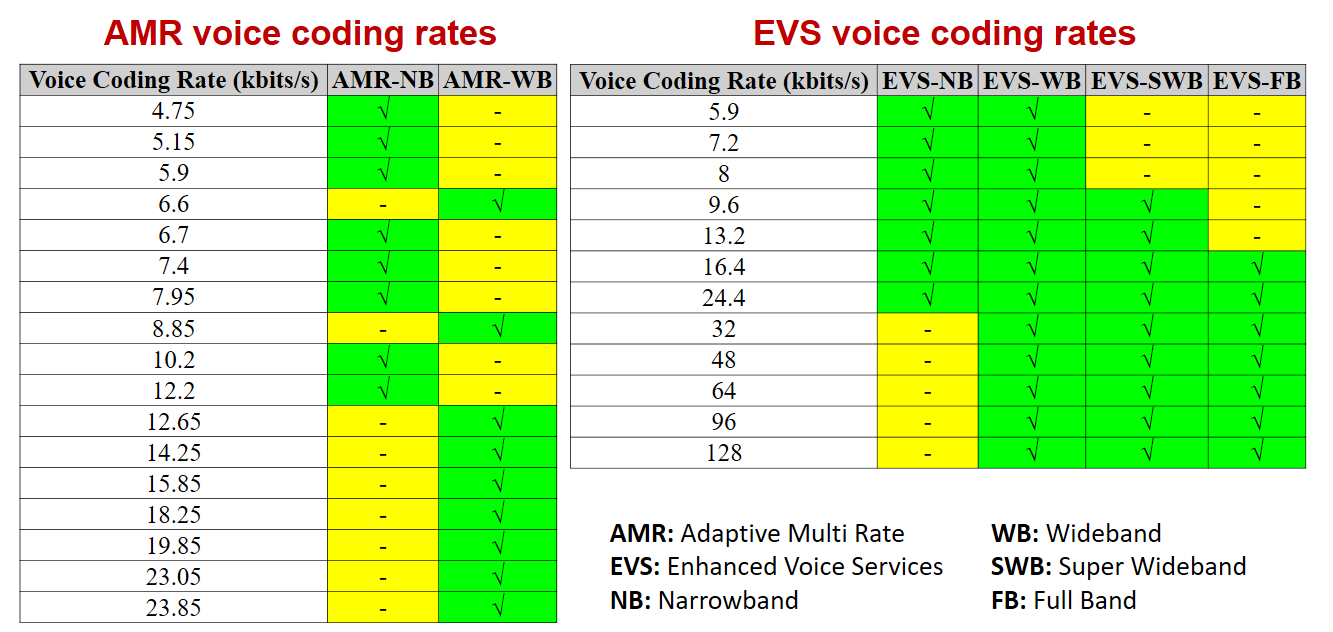
There are two speech states for VoLTE:
Talk Spurts: during this period the UE sends or receive voice data packets. Voice packets are transmitted every 20 ms. Size of voice data packet depends on used speech coding rate.
Silent Periods: it means the UE doesn’t have any voice packets, in this period UE transmits or receives silence insertion descriptor (SID) frames. Interval is 160 ms for SID frames. The SID frame size is fixed to 56 bits for AMR speech codecs and 64 bits for EVS speech codecs.
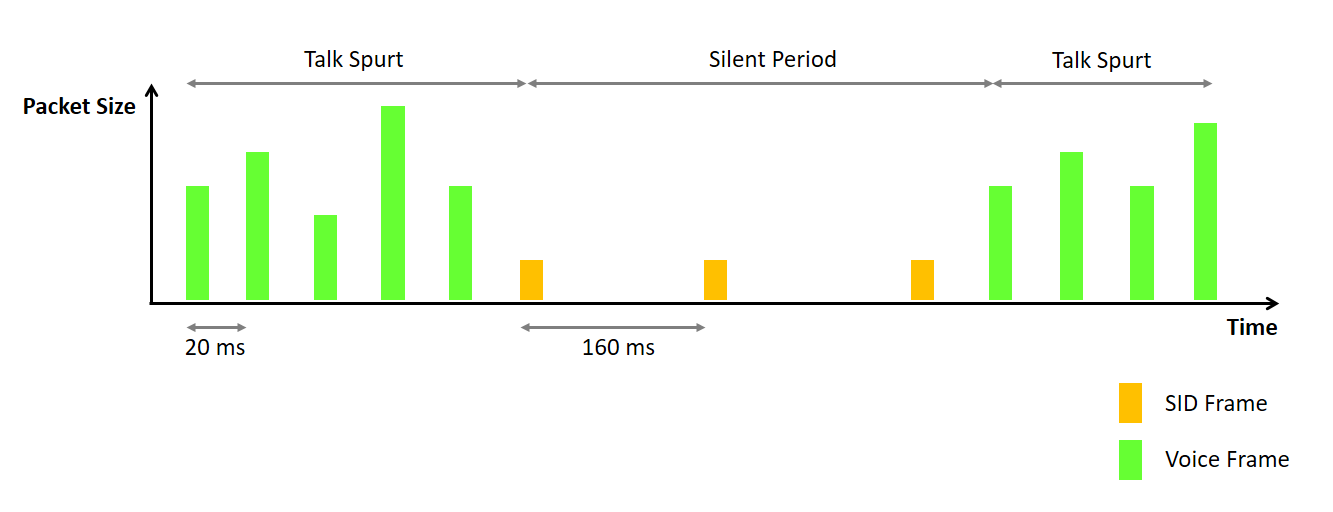
Mean Opinion Score (MOS) is a measure of voice quality, here we can find quality values for VoLTE:
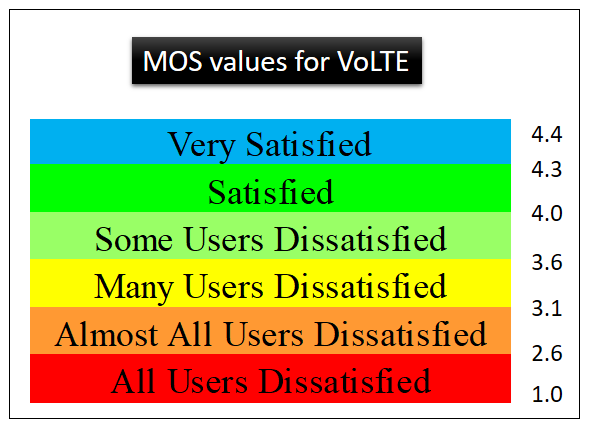
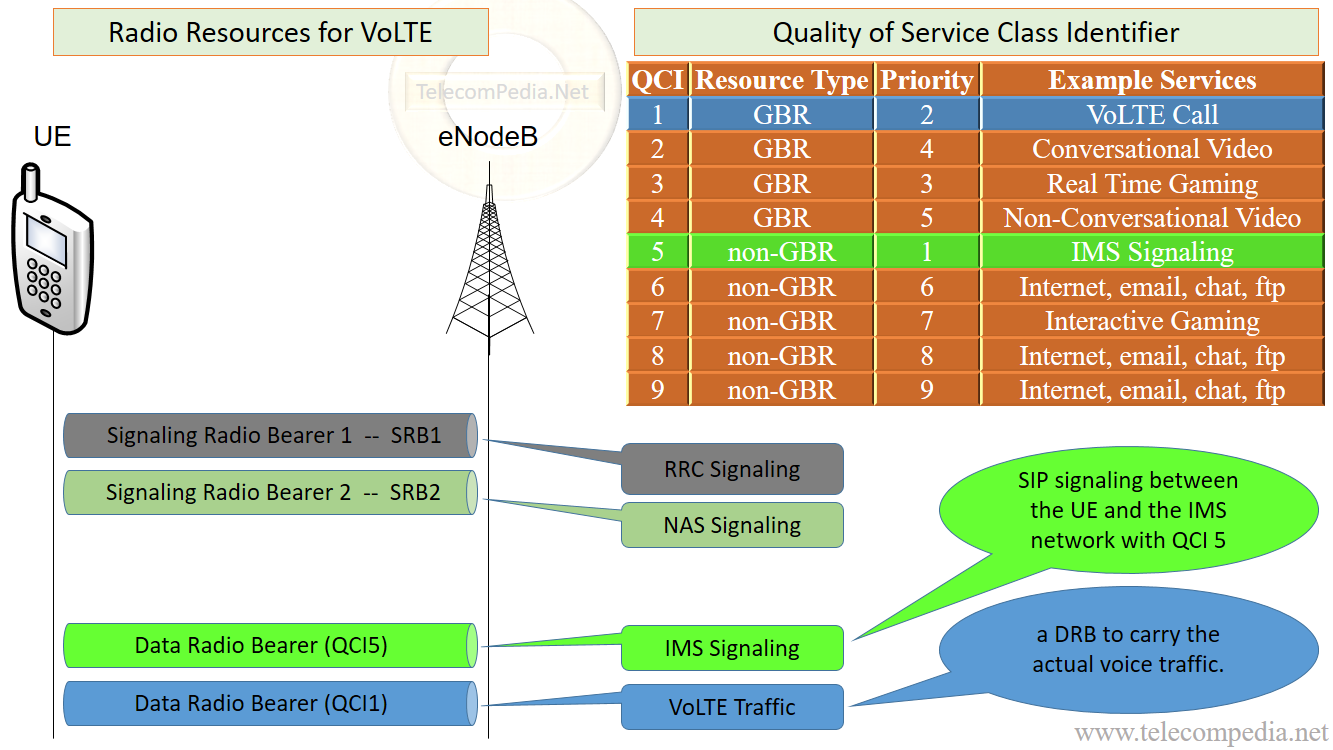
really very informative website.keep it up.keep writing on new topics of telecom
thanks so much for good document
you are a shiny star 🙂
Very nice article, I only wanted to add the following thing: for those who want to test VoLTE in their premise, they can search for a VoLTE Lab and Wikipedia has some references
https://en.wikipedia.org/wiki/Voice_over_LTE#cite_note-24
Nice and helpful article….!!